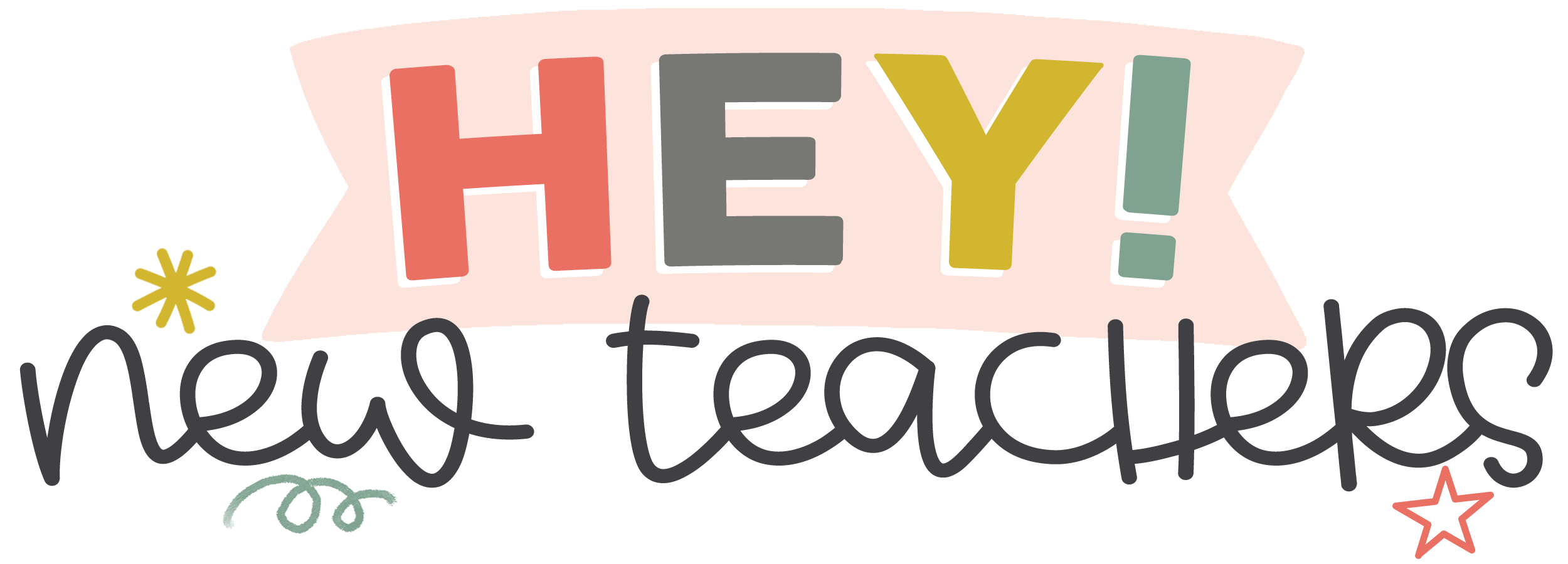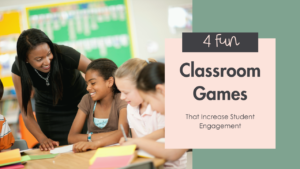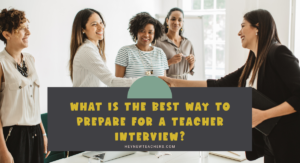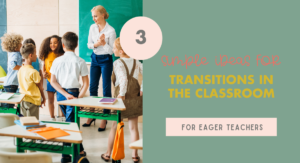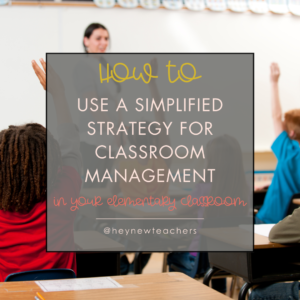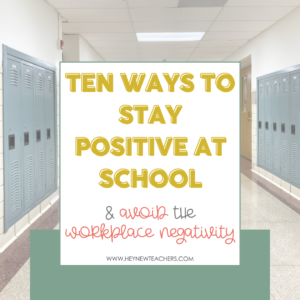How to Control a Classroom Without Yelling
Do you ever feel like you can’t gain control of your noisy classroom? Like your students are chatting ALL DAY LONG? Are you struggling to figure out how to control a noisy classroom without yelling? It’s exhausting! Trying to limit the amount of talking in your classroom can feel like you are a dog chasing its tail. It just never ends! But fear not! In this blog post, I’ll be sharing seven practical tips to help you control a noisy classroom and create a haven of learning for your students.
If managing a classroom feels overwhelming, it could be because your management system is too complex. Grab my FREE guide to Simplify Classroom Management by dropping your name and email below!
Set up Expectations from the Start
Establishing clear expectations from the beginning is essential learning how to control a classroom without yelling. Without clear guidelines, students may not understand what is expected of them, leading to increased noise levels and disruptions. By setting expectations early on, you lay the foundation for a well-managed classroom environment.
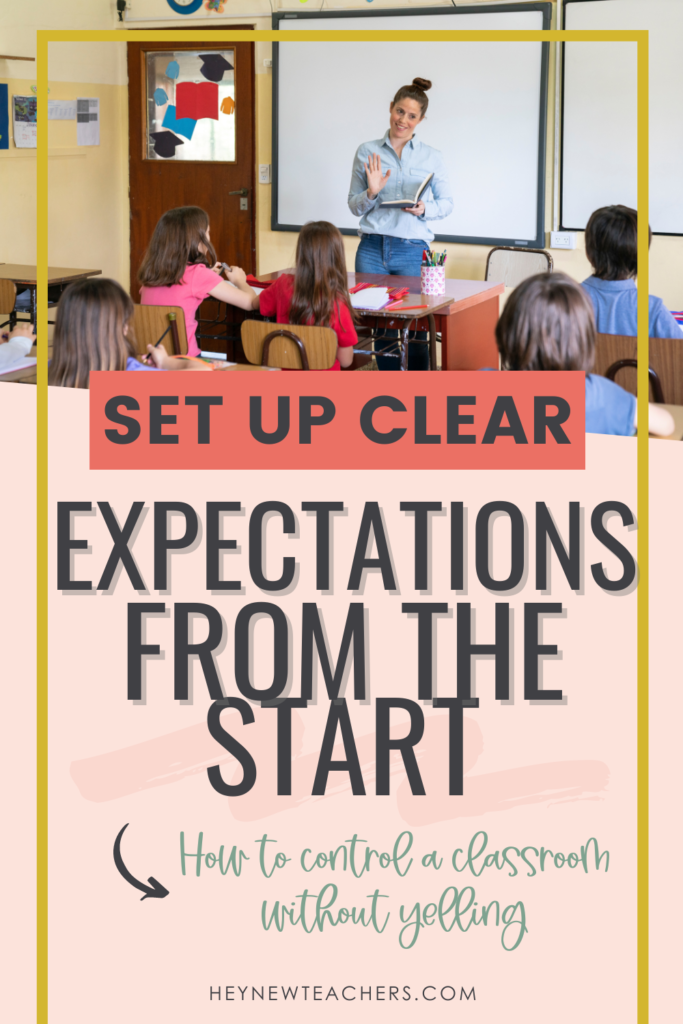
Clear Communication
Begin the school year by clearly communicating your expectations to your students. Use age-appropriate language and keep the rules simple and concise. Make sure students understand the reasoning behind each expectation to foster a sense of ownership.
Interactive Discussions
Engage your students in interactive discussions about classroom rules and expectations. Encourage them to contribute ideas and suggestions, fostering a sense of ownership and accountability.
Visual Reinforcement
Support verbal communication with visual aids such as posters or charts displaying the classroom rules. Visual reinforcement can serve as a constant reminder for students and help them internalize expectations.
Routines & Procedures
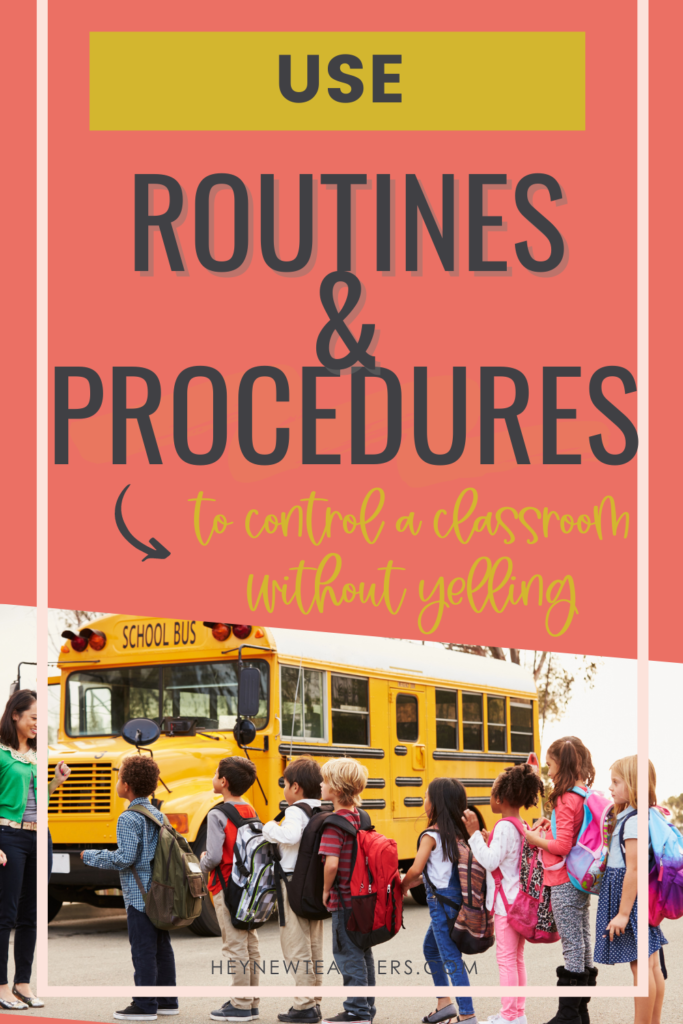
Teach
Take the time to explicitly teach your students every classroom routine and procedure. Break down each step and demonstrate the expected behavior, providing clear instructions and explanations.
Modeling
Modeling is key to helping students understand expectations. Demonstrate the correct way to perform a routine or procedure, and then have students practice and role-play the behavior themselves.
Practice
Provide ample opportunities for students to practice routines and procedures in a structured setting. Offer feedback and reinforcement as they refine their skills, gradually increasing independence.
Review and Reinforcement
Regularly review and reinforce classroom routines and procedures to ensure they become ingrained in students’ behavior. Use reflection sessions to discuss what went well and address any areas needing improvement.
Attention Getters
Utilizing attention-getting techniques can help regain control of a noisy classroom without the need for yelling. These strategies redirect students’ focus and bring attention back to the task at hand in a positive and proactive manner.
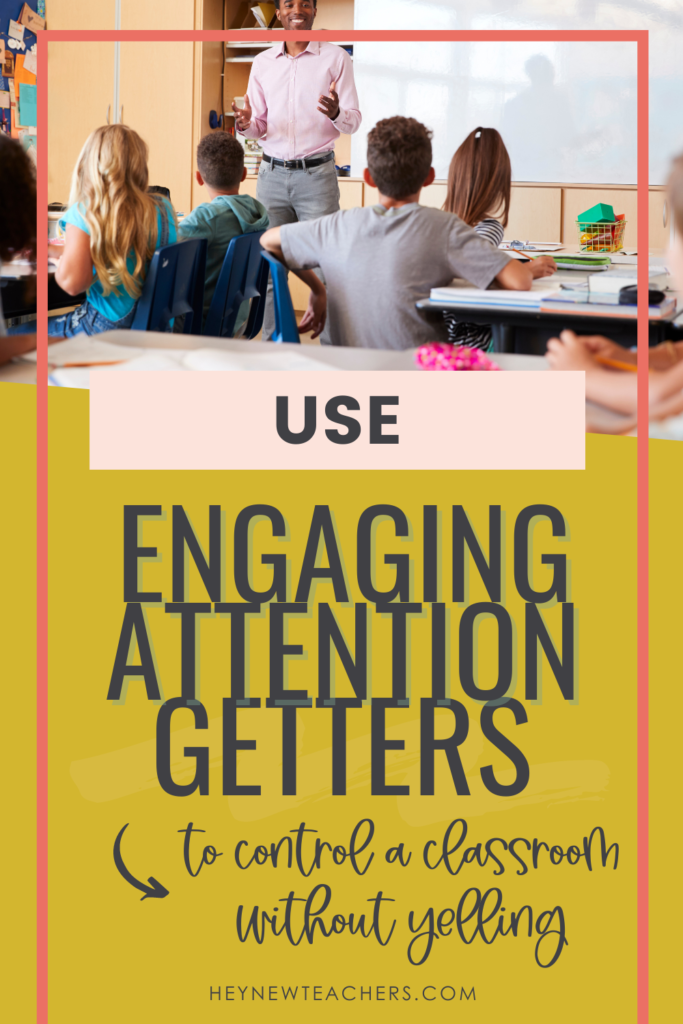
Verbal Cues
Develop a set of verbal cues or signals to regain students’ attention when the classroom gets noisy. These could be simple phrases or call-and-response chants that signal it’s time to focus.
Seasonal Attention Getters
Inject fun and creativity into attention-getting strategies by incorporating seasonal themes or holidays. For example, use themed phrases or gestures related to the current season or upcoming holiday.
Multi-Sensory Techniques
Explore multi-sensory attention-getting techniques such as clapping or snapping patterns, countdowns, or using a wireless doorbell. Engaging multiple senses can be highly effective in capturing students’ attention.
Positive Reinforcement
Implementing positive reinforcement strategies can help encourage desired behaviors and maintain a positive classroom atmosphere without the need for yelling. By recognizing and praising students for their efforts and achievements, you can reinforce positive behaviors and motivate students to continue exhibiting them.
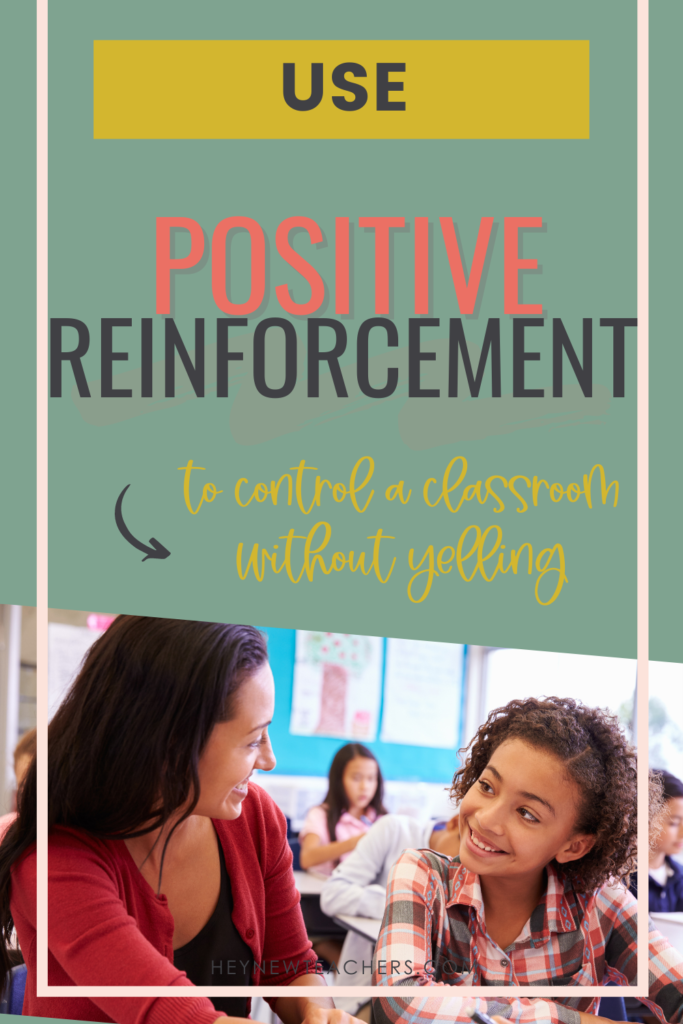
Verbal Praise
Offer specific and genuine verbal praise to students who exhibit positive behaviors such as raising hands, transitioning quietly, or working independently. Highlighting their efforts and accomplishments boosts their confidence and motivation.
Non-Verbal Reinforcement
Incorporate non-verbal forms of reinforcement such as thumbs up, high-fives, or nods of approval. These gestures convey encouragement and appreciation without the need for verbal communication.
Tangible Rewards
Consider implementing a reward system where students earn tokens, stickers, or other tangible rewards for demonstrating positive behaviors. This provides additional motivation and reinforcement for desired actions.
Visual Cues to control a classroom without yelling
Utilizing visual cues effectively can help reinforce expectations and promote self-regulation in the classroom without resorting to yelling. Visual reminders provide students with constant reinforcement of expected behaviors and serve as a proactive approach to classroom management.
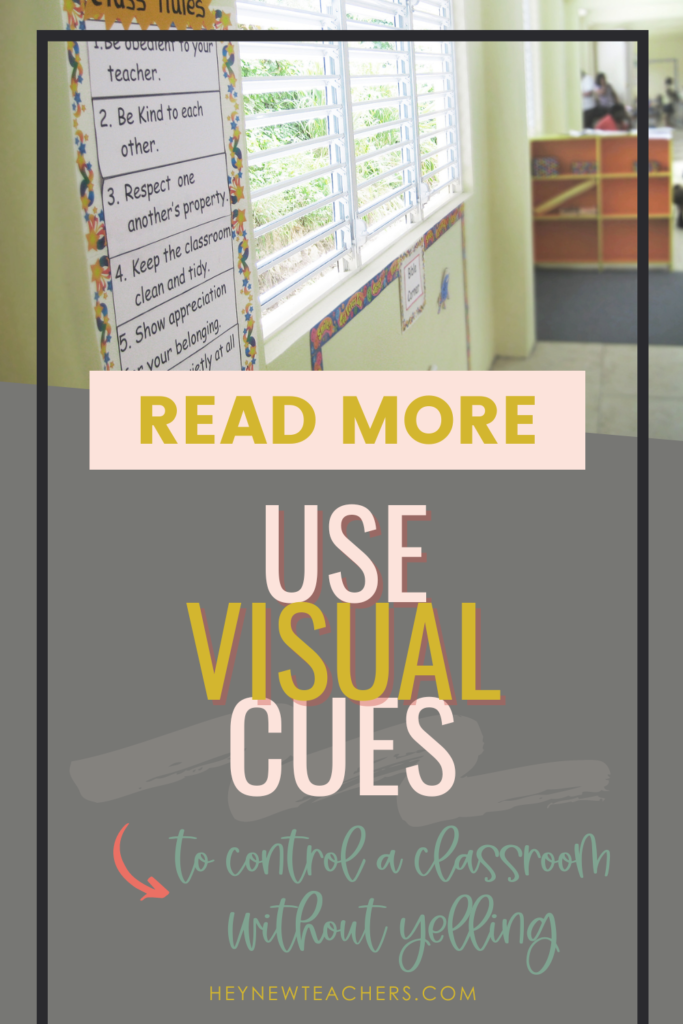
Strategic Placement
Strategically place visual cues such as classroom rules posters or voice level signs in prominent locations where students can easily see them. This constant visual reminder reinforces expectations and encourages self-regulation.
Interactive Displays
Create interactive displays that allow students to actively engage with visual cues. For example, use clothespins or magnets to indicate their current behavior or voice level, providing a hands-on approach to self-monitoring.
Consistent Use
Consistency is key when using visual cues. Make sure to consistently refer to and reinforce the visual cues throughout the day, reinforcing their importance and relevance.
Arrange Seating Thoughtfully
Thoughtfully arranging seating can help minimize distractions and promote a focused learning environment without the need for yelling. By strategically grouping students based on various factors, you can create a positive classroom dynamic conducive to learning.
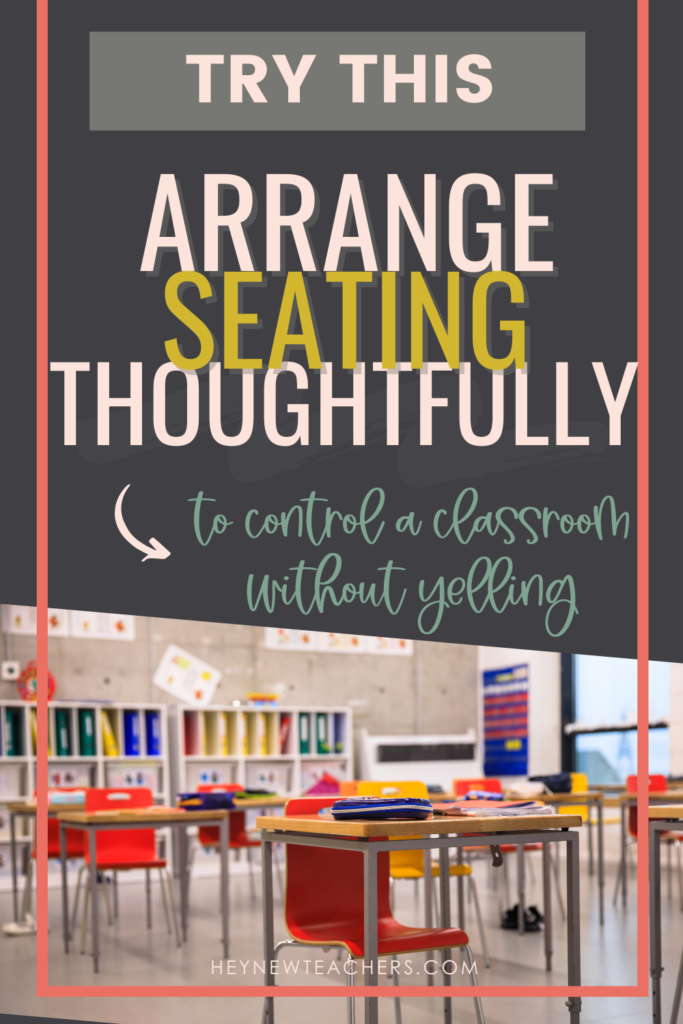
Observation and Assessment
Take time to observe students’ interactions, learning styles, and needs when arranging seating. Consider factors such as personality dynamics, academic abilities, and social needs to create balanced and effective seating arrangements.
Flexible Seating Options
Offer flexible seating options to accommodate diverse learning preferences and needs. Consider incorporating options such as standing desks, bean bags, or floor seating to provide students with choices and autonomy.
Regular Evaluation
Regularly evaluate and adjust seating arrangements based on student feedback and classroom dynamics. Be open to making changes as needed to optimize learning and minimize distractions.
Give Students a Chance to Talk
Encouraging student participation and discourse can foster a collaborative learning environment without the need for yelling. By providing opportunities for students to express themselves and engage in meaningful discussions, you empower them to take ownership of their learning.
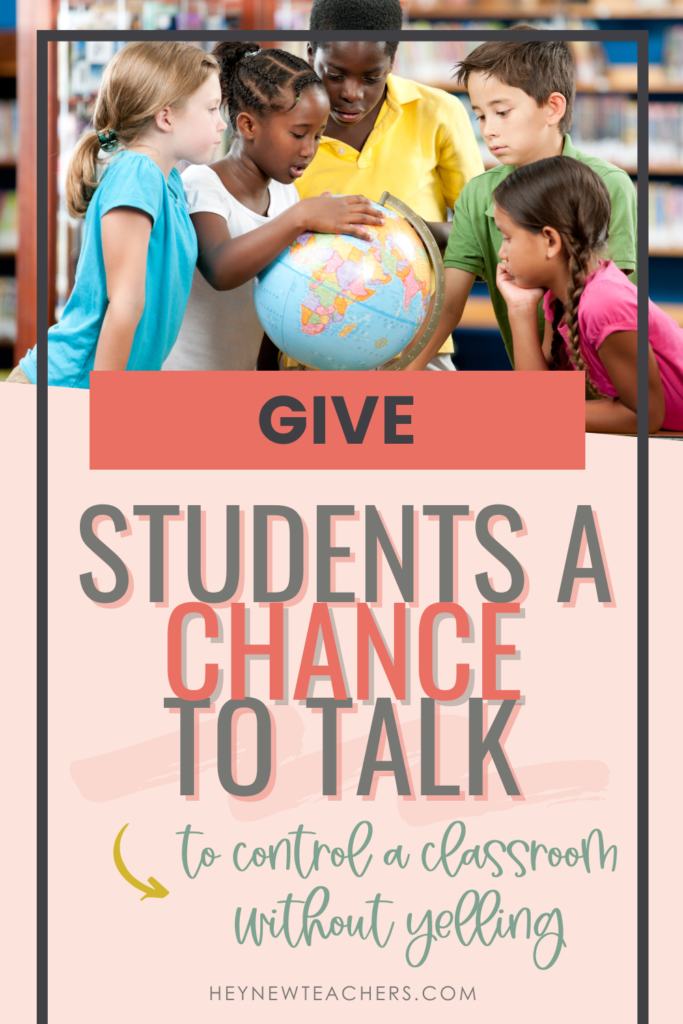
Balancing Teacher Talk
Find a balance between teacher-led instruction and student-led discussions. Encourage active participation and engagement by providing opportunities for students to share their thoughts, questions, and ideas.
Structured Discussions
Incorporate structured discussion formats such as think-pair-share or collaborative group work to promote meaningful student discourse. Provide clear guidelines and expectations to ensure productive and respectful interactions.
Encouraging Participation
Create a supportive environment where all students feel comfortable expressing themselves and contributing to discussions. Encourage shy or reluctant students to participate by providing encouragement and positive reinforcement.
Build Relationships
Building strong relationships with your students is essential for creating a positive classroom environment without the need for yelling.
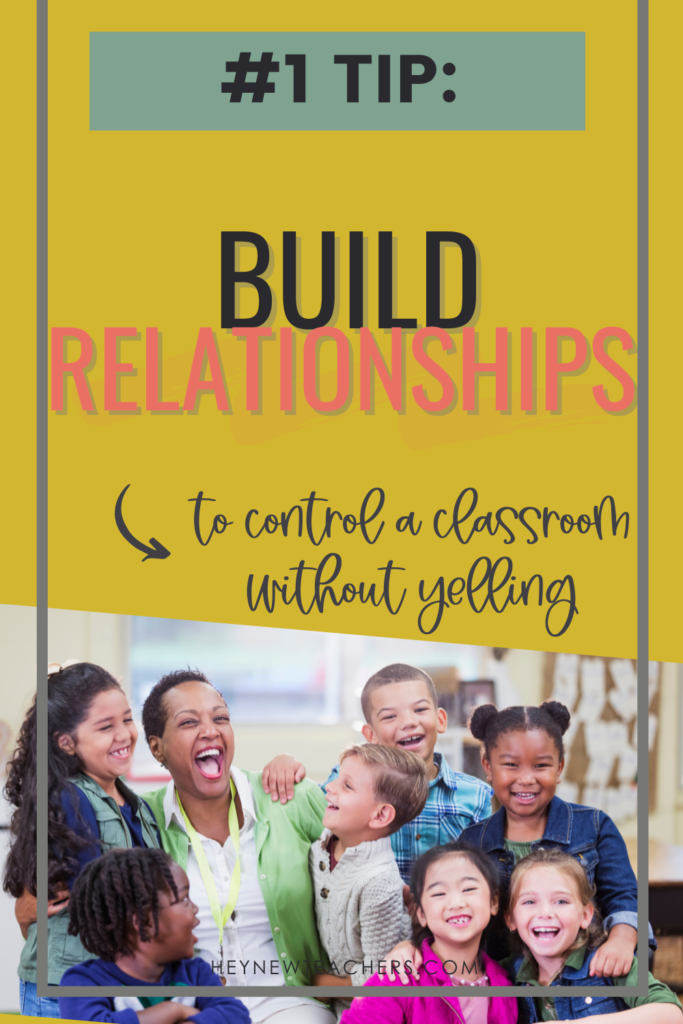
Get to Know Students
Take the time to get to know your students on a personal level. Learn about their interests, hobbies, and family life. Showing genuine interest in your students helps build trust and rapport.
Let Students Get to Know You
Share information about yourself with your students. Talk about your family, hobbies, and interests. Sharing personal stories helps humanize you as a teacher and fosters a sense of connection.
Laugh with Students
Create a positive and welcoming atmosphere in the classroom by sharing moments of laughter with your students. A good sense of humor helps build camaraderie and strengthens the teacher-student relationship.
Managing a noisy classroom without yelling requires a combination of clear expectations, effective routines, and proactive strategies for attention management and positive reinforcement. By implementing these seven strategies consistently and thoughtfully, you can create a conducive learning environment where every student can thrive.
While it can feel like a lot, classroom management does not have to be complicated! Drop your name and email below, and I’ll send you my FREE guide to Simplify Classroom Management!
Remember, it’s essential to be patient and flexible, as it may take time for students to adjust to new expectations and routines. Stay proactive in addressing noise-related challenges and celebrate successes along the way. With dedication and perseverance, you can transform your classroom into a haven of learning and productivity.
